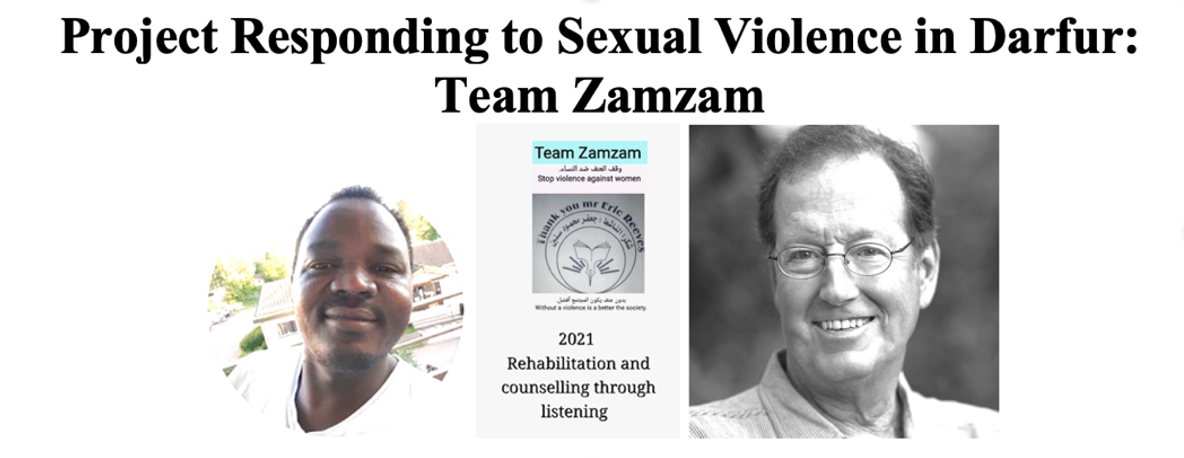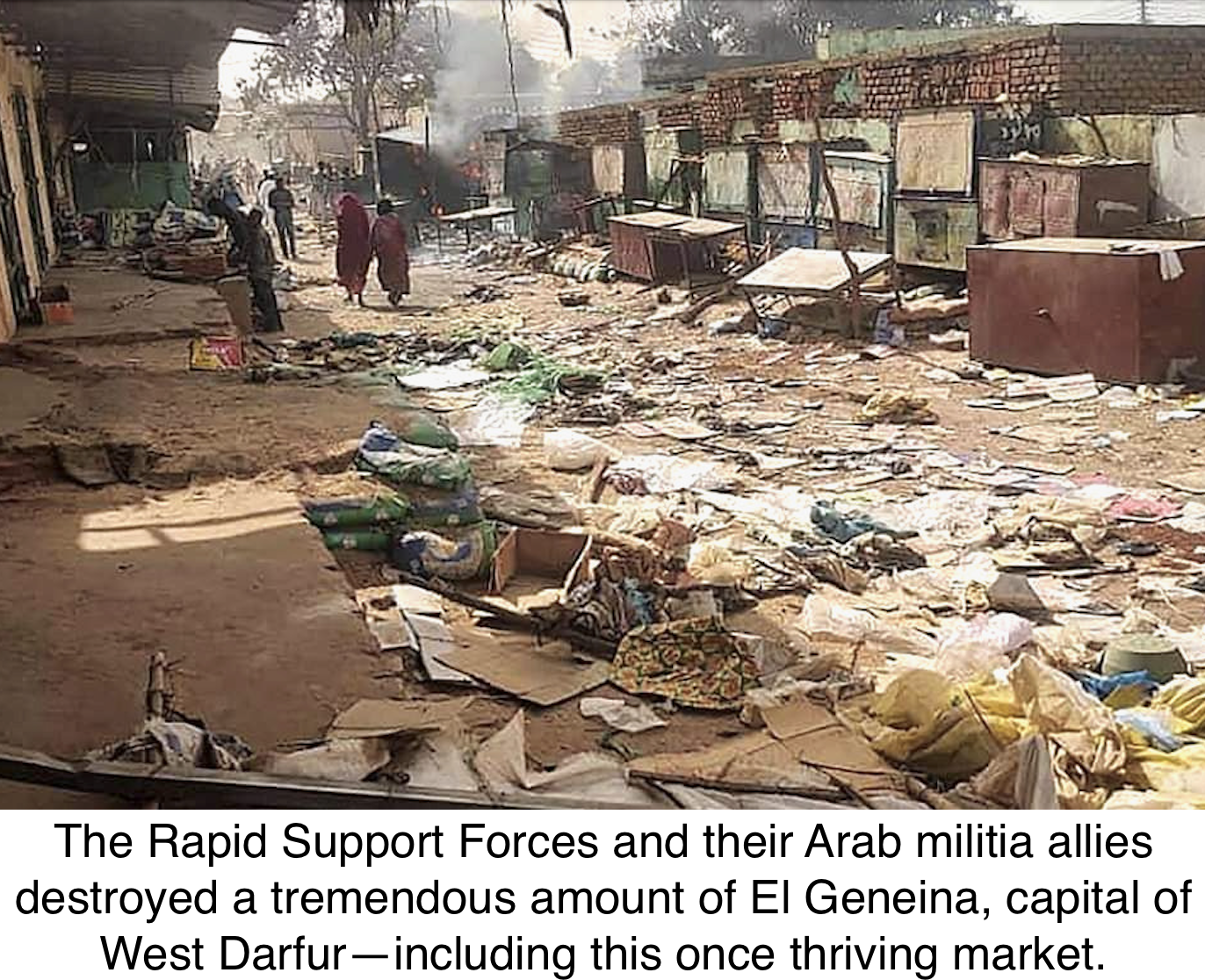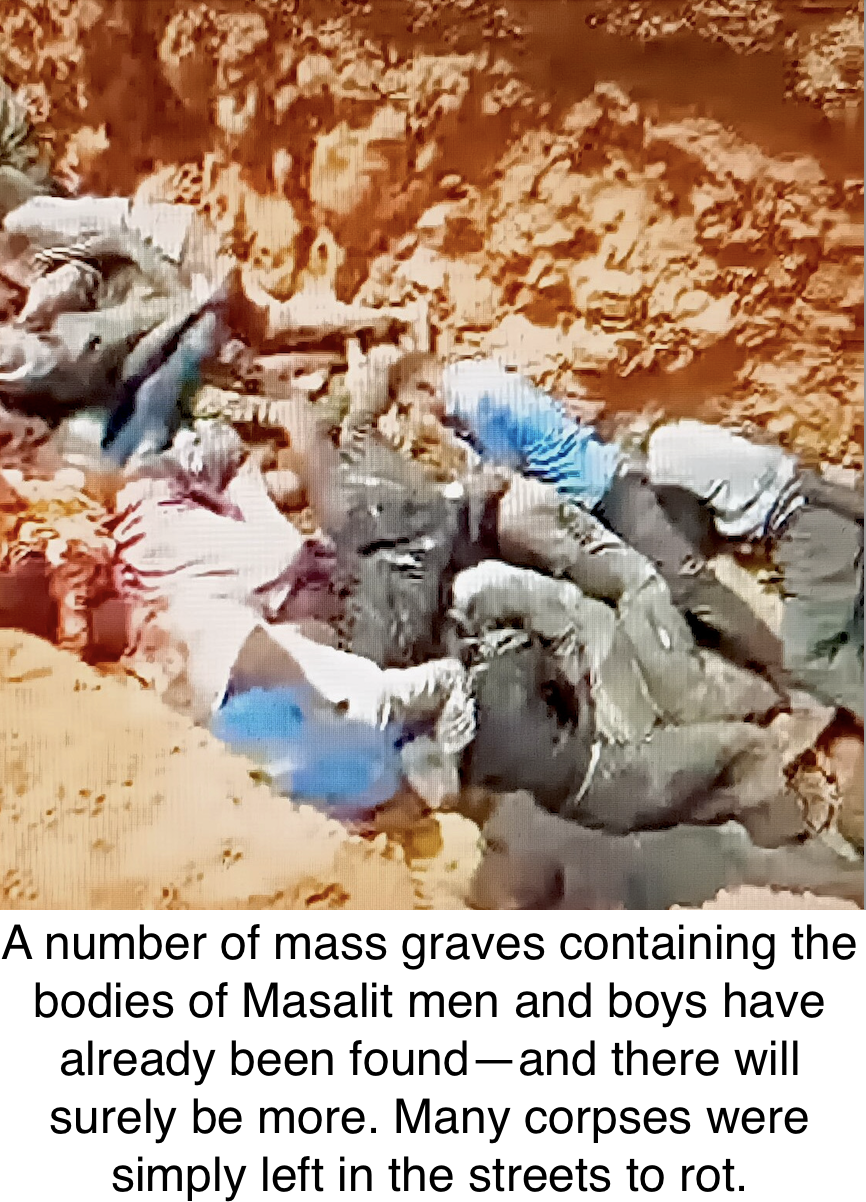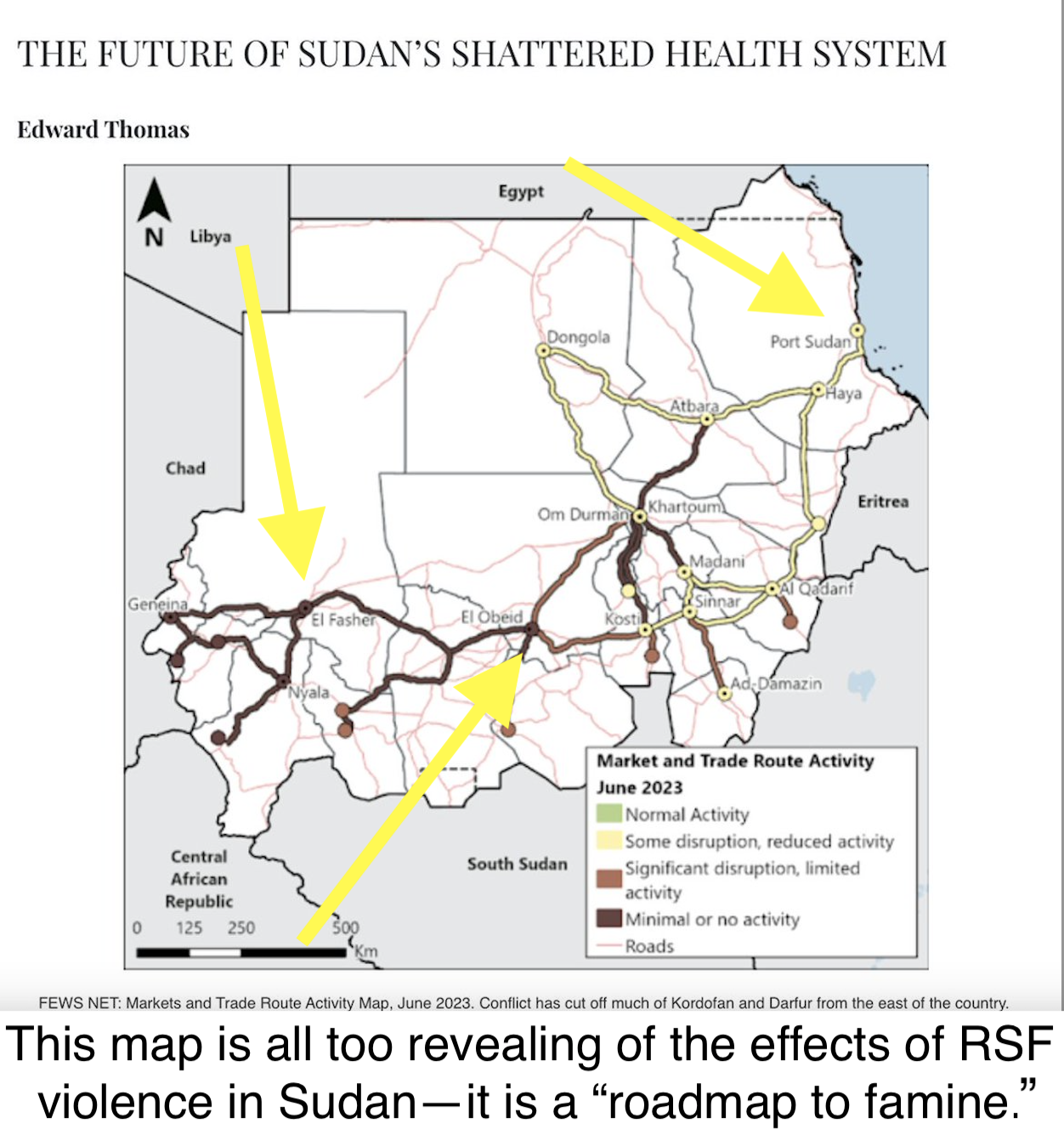
 Gaffar Mohammud Saeneen and Eric Reeves, Co-Chairs
Gaffar Mohammud Saeneen and Eric Reeves, Co-Chairs
Nancy Reeves, Editor and Funding Advisor; Julie Darcq, Online Campaign Coordinator
Overview (Eric)
Coming so soon after the traditional American thanksgiving holiday, I feel compelled to express my own deep gratitude for the donors—large and small—who have given life to a project that has worked for more than three to save lives and rescue others from unimaginable pain and suffering on Zamzam camp for displaced persons. And I know from many communications with the women of Team Zamzam—the “Sisters,” as they are known in the camp—that their gratitude is boundless. They feel empowered in their work on behalf of women who are enduring the trauma of sexual violence, but also in providing humanitarian assistance. One particularly generous contribution to the project has allowed us to virtually double the provision of food packages to the most needy: orphans, the very elderly, the disabled, and women with multiple children and no income.
We have also been able to rehabilitate another well this month—our sixth to date—and provide water to a large group of displaced persons at risk of dehydration in the coming months. This comes from the generosity of Dr. Norbert Goldfield.
But our project focus continues to be on the plight of traumatized women and girls who have endured brutal sexual assault. Numerous counseling sessions were conducted this month, both on an individual and a group basis. The “Sisters” are deeply experienced at this point and have become extremely adept in all their responses to victims of this terrible scourge. Additionally, they provide the pre- and post-surgical care for the girls and women who are fortunate enough to receive fistula reparative surgery in El Fasher. An additional three women had this life-changing reparative surgery this month. Even so, the waiting list for this procedure becomes increasingly long as sexual violence accelerates in North Darfur—and indeed throughout Darfur and greater Sudan, as well as in the unprotected camps and locales of Darfuri refugees in eastern Chad.
If we take a step back from the project in Zamzam, however, it becomes clear from recent news reporting and reports from the ground that the conflict that began in Khartoum this past April has fully extended to Darfur—and that El Fasher is as a consequence the only major capital city not under the control of the brutal, ruthless, finally genocidal Rapid Support Forces (RSF) under the command of Hamdan Dagalo (“Hemedti”), who is fighting the regular Sudanese army throughout Darfur, if most consequentially in the greater Khartoum urban area. The coordinating counselor for Team Zamzam has again provided a detailed account—expertly translated by my colleague Gaffar—not only of what has been accomplished in the preceding month, but an assessment of the prevailing insecurity and the obstacles to purchasing food and medicine. The Team makes regular assessments in all quarters of the vast camp (more than three miles from one end to the other).
These insights from someone on the ground and attuned to political and military developments has proved invaluable to me and many others—and to at least one senior UN official who has worked on humanitarian issues in Sudan. It continues to be the case that there is virtually no international human rights reporting presence in Darfur, few reports from those comprising the small international humanitarian presence, and a total lack of an international news reporting presence.
But the implications of what the coordinating counselor provides in her report about fighting in North Darfur are immense. In West Darfur we have already seen large-scale assaults by the RSF and its Arab militia allies on the Masalit, one of the largest non-Arab/African tribal groups in Darfur, with a traditional homeland in West Darfur. Thousands have been killed (primarily men and boys) and many tens of thousands have fled to neighboring Chad, where their numbers are overwhelming an extremely limited humanitarian capacity. Similarly, Nyala (capital of South Darfur) and Zalingei (capital of Central Darfur) have been seized by the RSF, generating a tremendous exodus of civilians who will find themselves displaced in a land that is increasingly dangerous and unforgiving in what it offers to those in need.
At this point, for El Fasher and North Darfur as a whole, the primary threat comes from the inability of humanitarian convoys to make their way on the long journey from Port Sudan on the Red Sea (where humanitarian supplies are stockpiled) to the various regions of Darfur, some more than 1,000 miles from Port Sudan. The map below comes from Edward Thomas, a colleague of mine at the Rift Valley Institute (based in Nairobi). Although the report from which the map comes is primarily focused on Sudan’s health system and the movement of medical resources, the map itself is a “roadmap to famine,” showing just how little humanitarian aid is moving along the main supplies arteries in the country west of El Obeid, a primary target of RSF forces:
It is important to note as well that RSF forces have attacked El Fasher, although the army and other combined protection forces there have repelled attacks and retained control of most of the city. But in the absence of humanitarian aid, the people of Zamzam IDP camp, some 15 miles to the southwest of El Fasher, are moving toward the first stage of famine, with disease and dehydration taking an ever greater toll. Transfer of funds for the project at Zamzam continues to be possible, and the banking system will improve if El Fasher is spared an all-out assault by the RSF. Even so, security for the camp is tenuous and it is impossible for girls or women to move even a kilometer outside the camp without significant risk of sexual assault.
Fortunately—since my colleague Gaffar arranges for movement of funds to Team Zamzam—food distributions continue, although acute shortages in the overall food supply have meant skyrocketing prices for even the most basic foodstuffs. Medicine (if available) also continues to be distributed—and as with food, goes to the very most needy in the camp. Counseling sessions continue, with extraordinary results in most cases. The full account of what has been provided by Team Zamzam over the past month are reflected on the coordinating counselor’s report.
All this is made possible because of the wonderful generosity of a great many donors. The project, so far as I know, is unique in Zamzam, and the many successes have drawn volunteer assistants and has given the women of Team Zamzam a powerful political voice within the camp and beyond. Buoyed by their achievements, the “Sisters” work with tremendous energy and a powerful esprit de corps.
How to Help
Assistance is urgently needed and will be greatly appreciated by Team Zamzam, and by the girls and women whose suffering they seek to alleviate. Increasingly importantly, the distribution of food and medicine presently is all that assists many within the camp who are daily moving closer to starvation (see above). Here I should also stress the tremendous efficiencies of purchases by a staff with local knowledge, as well as the value of their deep understanding of where need is greatest within this vast camp, swollen with recent displacements caused by insecurity.
NB: It is now possible to make a tax-deductible contribution to our project, using a portal on the website of a 501/c/3 organization operating in Sudan. Operation Broken Silence, working primarily on health and education issues in the Nuba Mountains of South Kordofan, has created a special site for a tax-deductible contributions to our project, and we hope this makes contributing to the health and well-being of girls and women in Zamzam easier for Donors.
We also hope that all will keep in mind our project as a whole operates with truly extraordinary efficiency, in ways matched by no humanitarian organization operating in Darfur that I am aware of, a region I have been researching for two decades. There is absolutely no overhead for this project.
Those wishing to assist in funding the work of Team Zamzam may also send a check directly to Eric (Eric Reeves, 31 Franklin St., Northampton, MA 01060)
or
Purchase one of his woodturnings: https://www.ericreeves-woodturner.com/gallery
100% of the purchase price of every woodturning directly supports the project in Zamzam.
*******************
Previous updates are archived at: https://www.ericreeves-woodturner.com/blog/
A “You Tube” video of Eric describing the project can be found at: https://youtu.be/QsRUa7GoVgY






